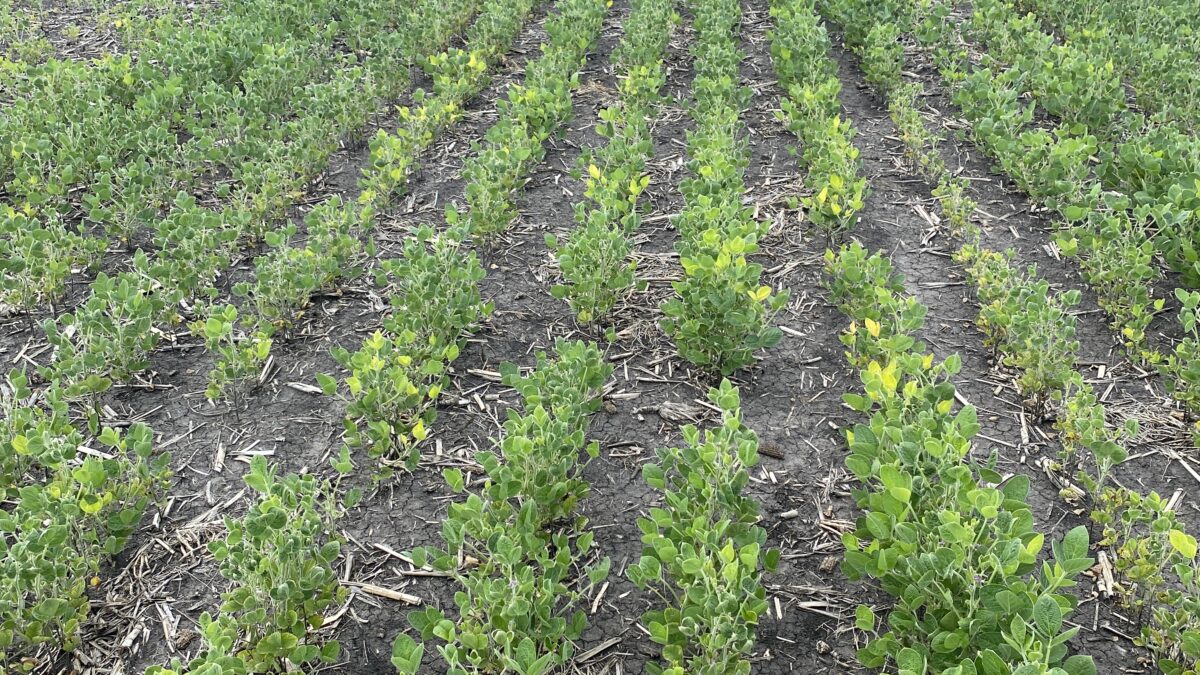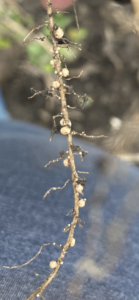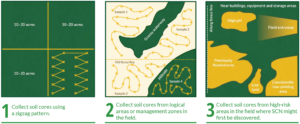So, You’re Ready to Sample for SCN?


SCN levels continue to sneak up regionally. In Clifford, ND and Crookston, MN, we identified fields that we previously thought had no cyst — testing came back at 10,000+ egg count.
Soybean cyst nematode is present in all crop-producing areas of Minnesota, Eastern South Dakota, and Eastern North Dakota. It continues moving further west into the Dakotas with each passing year.
Soil sampling is the first step in managing SCN. Every grower in these regions will want to know at what levels SCN is present in their fields. Sample testing will give you the information you need to create an SCN management plan.
How do I sample for SCN?
SCN lives on soybean roots, so this is precisely where you need to focus your sampling efforts. A hand probe works best, allowing you to place the probe just outside the soybean stem and probe diagonally through the root zone. Sample at 6-8” deep and take 10-20 cores per sample bag, mixed thoroughly.
Where should I sample?

https://www.ndsu.edu/agriculture/ag-hub/ag-topics/crop-production/diseases-insects-and-weeds/crop-diseases/how-sample-soybean-cyst
This depends. If your goal is simply to identify if you have SCN, it is best to focus your sample efforts on areas most likely to harbor SCN. Field entrances, previously flooded areas, consistently low-yielding areas and along fence lines are all areas that are good to sample to determine SCN presence. SCN is difficult to spot, so focusing on these areas or zones where yields seem to have declined is a good start.
If you know you have SCN and want to gain information on concentration levels, then a different sampling approach should be taken. There are a few ways to achieve this:
1) Sample by management zones within a field. Much like zone sampling for fertility, you will also find varying levels of SCN within different management zones.
2) Sample in a zig-zag pattern to collect a representative sample across the field. Remember, if you are sampling a large field (a quarter or half section), it will be hard to determine the concentration levels of SCN across the field accurately. Smaller sample sizes (around 20 acres) will give a more accurate picture of how SCN is distributed across the field.
When should I sample?
Although you can sample any time during the growing season, I recommend that the sample be taken after soybean harvest and before tillage, when population levels will be at their peak.
You’ve tested… now what?
- Anything higher than 200 should be managed.
- It is important to note that a test of 1,000 could quickly become 5,000+ after the next planting of soybeans in that field.
- When levels approach 8-10k, soybeans should be removed from the rotation for a few seasons, if possible.
Looking for more information on SCN? Check out our one-stop shop for all things nematode.











